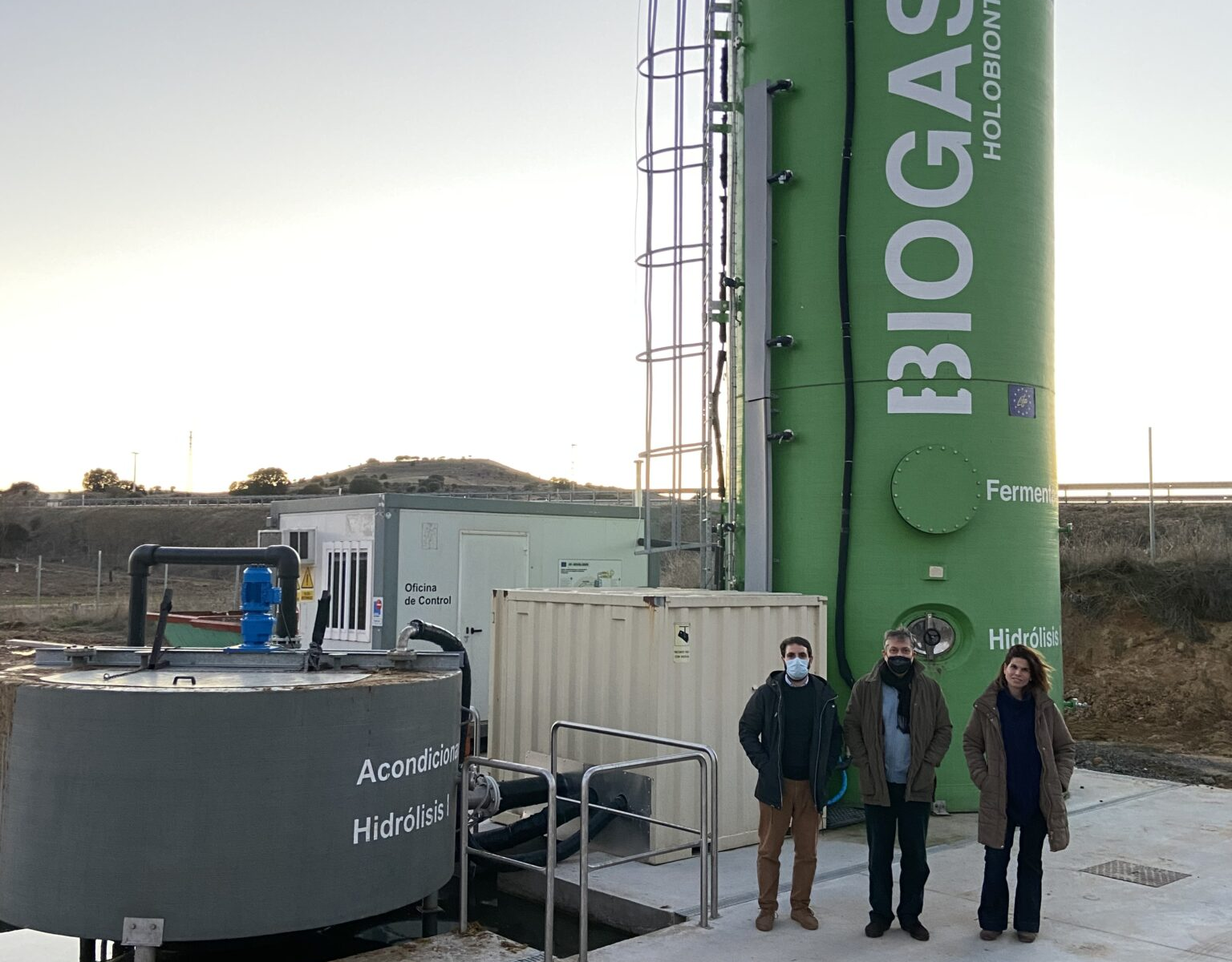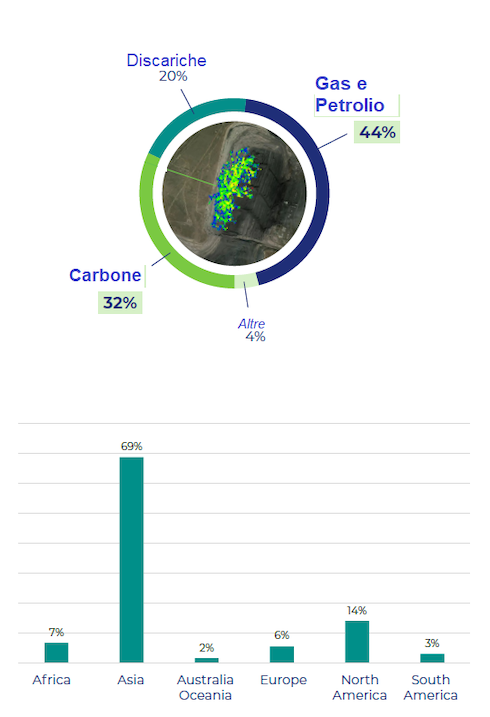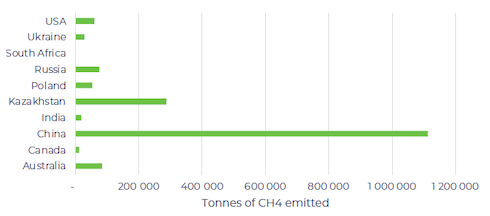Last Updated on 07/05/2022 by Mario A. Rosato
Re-publication of an article by Mario A. Rosé on Agronotizie.
The Spanish Council of Ministers approves the Guidelines to encourage biogas in record time.
Last 22 March the Spanish Council of Ministers approved the Guidelines on the Development of the Biogas Sector (full text in Spanish in This Page). A draft of the same had been submitted for public consultation in September 2021, receiving several suggestions from the Spanish trade associations which were included in the final document.
On conflict in Ukraine and the consequent price increase of fossil fuels pushed the European Commission to an official position with its Communication to European Parliament: REPowerEU: common European action for safer energy, more sustainable and at more affordable prices (Italian texts of the Communication and related annexes in This Page).
For several years the Spanish government has been trying to catch up on the development of renewable energies caused by previous governments. The war in Ukraine and the European thrusts have served to overcome the ideological discussions between the various parties at once, finding a agreement for the common good. This should be the norm in any democracy, but in a country that is culturally very similar to Italy, an agreement between parties based on scientific criteria is a rarity that constitutes news.
In a nutshell, the Guidelines just approved foresee:
- Overcoming i 10,4 TWh, which means to multiply by 3,8 current biogas production by 2030 strengthening the circular economy and stopping the exodus of the rural population by creating new supply chains. It is expected to avoid the emission into the atmosphere of about 2,1 million tons of CO2 equivalent to the year.
- Create a system of guarantees of origin for renewable gas, already in progress, with the possibility of setting objectives and entry quotas to develop the market.
- Activate an aid line to implement biogas projects, for a value of 150 million euros, borne by the Recovery Plan, Transformation and Resilience (Prtr).
The Spanish strategy does not leave out any potentially fermentable matrix or push for a concrete model: agricultural waste, Forsu and mud will be used to produce electricity, industrial heat or traction biomethane. It is important to note that the Spaniards included in the plan the production of heat directly from biogas to be used in the same digestion plant or in small district heating networks.. Thermal use is the most logical and economical for biogas, but it has never been taken into consideration by the production model imposed in Europe which sees electricity generation or upgrading to biomethane as the only valid options, much more expensive and complex.
The Spanish plan to incentivize biogas includes 45 measures divided into five lines of action:
- Regulatory tools. A guarantee of origin system will be created so that consumers can distinguish whether they purchase energy from biogas or natural gas. The simplification of the authorization procedures and above all the homogenization of the interpretations made by local authorities is expected – due to delays in Spain as in Italy – in particular with regard to the sustainable management of digestate as fertilized. On this last point, the reading of the text gives a glimpse of a somewhat approach’ leopard: the Spanish laws are simply listed which contain more or less the same ideological vices as the infamous Effluents Decree and the concept of “end of waste” – end of the legal status of refusal – for it is not clear what the simplification will be. As in Italy, digestate from sewage sludge will continue to be excluded from agricultural use.
Read also
The point of the situation on the Effluents Decree
- Sectoral instruments. The possibility of defining annual targets for sales volumes or biogas consumption is established, mandatory quotas, as is done for example with liquid biofuels. It is proposed to encourage the production of biogas with the aim that it is consumed in situ, for example as process heat in the agri-food industry or in the waste treatment process, or in vehicle fleets. In accordance with the ideology of Green Deal and the anti-biomethane ideology of the Spanish right is mentioned the possibility of injecting biomethane into the grid or converting biogas into hydrogen, provided that it proves economically viable.
Read also
Hydrogen from biomethane, biomethane from hydrogen
- Economic tools. It is proposed to divert existing aid funds (national programs) to finance the innovation and technological development of biogas and also take advantage of the Recovery Plan, Transformation and Resilience (Prtr). Apparently, the latter already provided for aid actions to the biogas sector, therefore its inclusion in the new Guidelines would seem rather a reminder or a kind of harmonization of measures.
- Cross tools. An effort will be made to prioritize biogas projects in disadvantaged areas, to introduce it in public procurement specifications. The study of anaerobic digestion technology will be included among the technical training subjects. Citizen awareness campaigns will be organized to improve the quality of separate waste collection. The creation of rural energy communities and working groups within agricultural cooperatives will be facilitated to facilitate its implementation. The participation and coordination of research projects financed by the’European Union.
- Driving research and development. Promote research into techniques for reducing emissions of contaminating gases that are not greenhouse gases, promote demonstration projects on the thermal use of biogas in industry and agriculture or innovation on less mature digestion technologies. It is not clear what the relationship of biogas with i is “non-greenhouse gas contaminants”, what these gases are or why some of the resources that should be used to promote biogas should be diverted to this small research niche. Whereas about the 60% of biomass (vegetable) when fed to the digester it comes out without being digested, the priority of research should be to increase digestion efficiency at all costs.
Read also
Digestate re-digestion and thermophilic digestion
The provision of the Spanish government provides us some food for thought:
- Although Spain is a country that is less methanized and less dependent on Russian gas than Italy, ideology “anti biogas” it weighs less among the Spanish parties. The fear of war made it possible to find an agreement relatively quickly despite the extreme fragmentation of political forces and regional parochialisms that characterize our Iberian cousins.
- The institutional attitude towards methane is more pragmatic – to put it mildly – in Spain than in Italy. To example, the project of the regasification plant in the port of Mugardos (A Coruna) has been exempted from the Environmental Impact Assessment (Via). In Italy, instead, the opposition to regasification terminal in the port of Trieste it demonstrated the ideological myopia and parochialism that characterize the Italian political class: for the then regional president Debora Serracchiani “it is incompatible with the Town Plan”; for the then minister Carlo Calenda “it is not strategic”; for the regional councilor Sara Vito is “oversized for the needs of the region”; e for the deputy Aris Prodani the Via had to be revoked due to a series of bureaucratic quibbles. The conspiracy hypotheses around the project are those common to the “committees of the no” and al M5S. We report a item as an example whose author hides behind a nickname.
In a civilized country, a work of the scale of a regasification plant should be evaluated in a logical and rational way, with a view to the long-term national interest. Nor with the parochial conspiracy attitude of Friuli Venezia Giulia, but not even with an uncritical acceptance as in the Galician project. - The Spanish plan acknowledges and aims to enhance the environmental benefits of anaerobic digestion. The goal of a partial self-sufficiency on methane is therefore not an end in itself, but included in a broader circular economy perspective. In Italy, instead, we find an opposite example in the Autonomous Province of Trento where it is planned to methanize 47 mountain municipalities that would be perfectly self-sufficient with a modern and rational management of forest biomass.
As the president of the Italian Federation for Renewable Energy (fiber), Walter Righini, in a press release: “In our country, the energy-programmable agroforestry complex would be able, if oriented properly, to avoid the import of at least 13 billions of cubic meters of natural gas, all with a very important financial impact on the national economic system. It deals with, indeed, of a value equal to 35/40% of the import of gas from Russia recorded in 2021, which today translates to 27-40 billion euros / year”. Among the points highlighted by President Righini, in his speech, there was also the importance of encouraging the development of biomethane for transport. - As for the issue of greenhouse gases it is as obvious as the politicians (and not only those of Rome and Madrid) they bring up the argument to defend their positions, without, however, having any scientific evaluation criteria. We have already pointed out in other articles the conceptual errors in the European doctrine of clean hydrogen (Biomass hydrogen and Green Deal e The return of biohydrogen) and also those of the no biogas political groups (I “committees of the no” and the vademecum no biogas and biomass e What future for bioenergy in the next legislature?). The commonplace is the demonization of conventional agriculture and livestock farming, guilty of methane emissions. The irrefutable reality is quite different. According to the data collected by the European satellite Ghgsat, the most technologically advanced tool for identifying methane emissions into the atmosphere, the contribution of agriculture and livestock is irrelevant. The main emitters of methane are the fossil fuel mining industries (Petroleum, natural gas and coal), followed by waste dumps (Photo 1). The emissions of Europe count for very little in the global balance, the main emitter of methane is China, followed at a great distance by the USA and Russia (Photo 2).
Photo 1: Methane emissions into the atmosphere by product sector. Ghgsat surveys, Relationship 2021, texts in Italian by the author
(Click on the image to enlarge)
Photo 2: Methane emissions into the atmosphere related to the coal mining industry. Ghgsat surveys, Relationship 2021. Four mines in China and one opencast in Kazakhstan emit about the same as all other coal mines in the rest of the world
(Click on the image to enlarge)
Personal reflections of the author
Autarchy was a valid political philosophical concept (perhaps) at the time of the Cyrene philosophers, but it is utopian for an industrialized and interconnected society like that of the twenty-first century. But, without falling into the illusions of the fascist era – even those without a logical or scientific basis – it is undeniable that a certain amount of self-sufficiency – based on circular economy criteria – and a policy of diversification of resources – based on common sense – are essential to ensure the energy resilience of a nation.
By overcoming party ideologies in a timely manner to respond to the energy crisis in one's country, Spanish politics has given us a little lesson in pragmatism. The Italian political class, in the meantime, continues to waste time debating the moral and ethical implications of supplying or not supplying arms to Ukraine, or whether to allocate the 2% of the Gross Domestic Product (Pil) military spending will anger the Pope or whether Senator A or Deputy B are “Putinians”. According to the Savoyard philosopher Joseph De Maistre (1753-1821), “Every nation has the government it deserves”. But what have we done to deserve a government of Crocian pseudo philosophers for whom emotional reactions matter more than logic or science??




